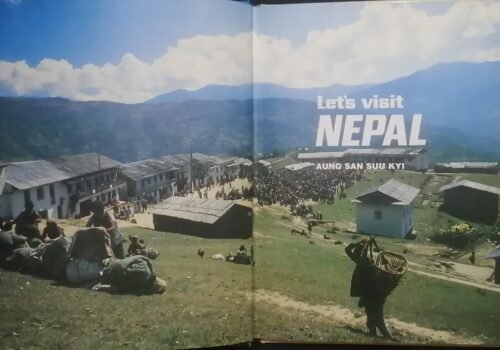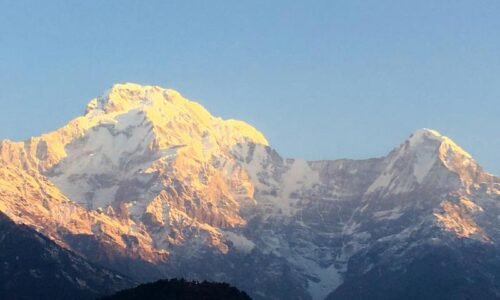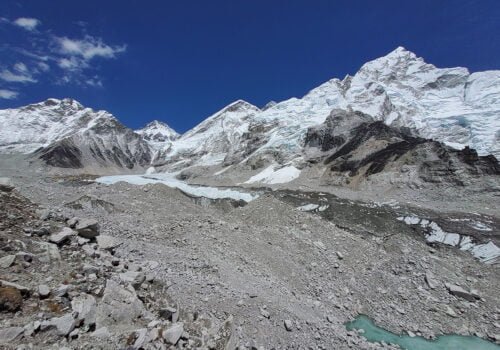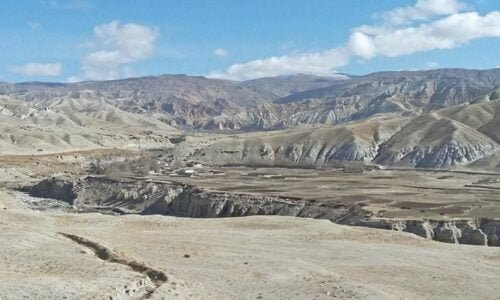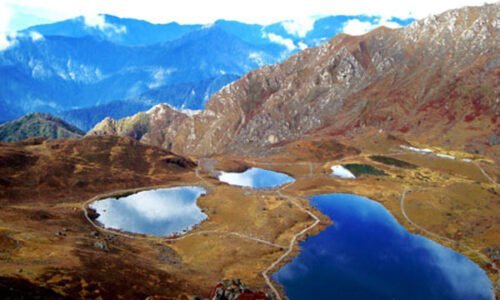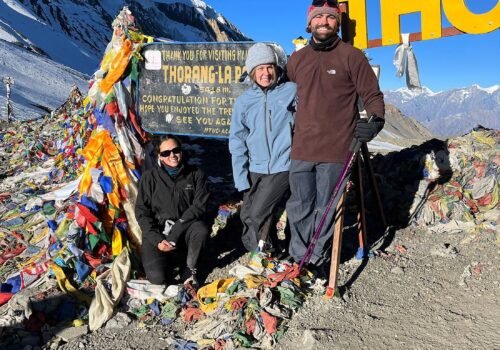12 National Parks of Nepal
5 Mar 2023 13 min to read
The Wildlife and Natural Experiences in the amazing 12 National Parks of Nepal is dream come true for every wildlife enthusiasts. Nepal is a country rich in natural beauty, with an abundance of national parks, conservation areas, and a wildlife reserve. It provides a great opportunity for visitors to experience Nepal’s incredible flora and fauna. From the splendid Mount Everest to the lush green jungles of the Terai, Nepal’s national parks has something to offer for every nature lover.
In this blog, we will explore 12 of Nepal’s most amazing national parks and the natural experiences they offer. It includes the activities like wildlife safaris, bird watching, hiking, and photography of the breathtaking views of the Himalayas and surroundings. Whether you’re an adventurer, a wildlife enthusiast, or simply seeking a peaceful escape into nature, Nepal’s national parks are a must-visit.
Chitwan National Park
For an amazing natural experiences in 12 national parks of Nepal, lets start with the first national park in Nepal. The first and oldest national park of Nepal is Chitwan National Park. In 1984, this park was listed as UNESCO World Heritage Site. Bishazari Taal is a buffer zone of the national park. This wetland is listed in the Ramsar Site. Chitwan national park is home to 128 tigers. It expands from 100 m in the river valley to 815 m in the Shivalik Hills.
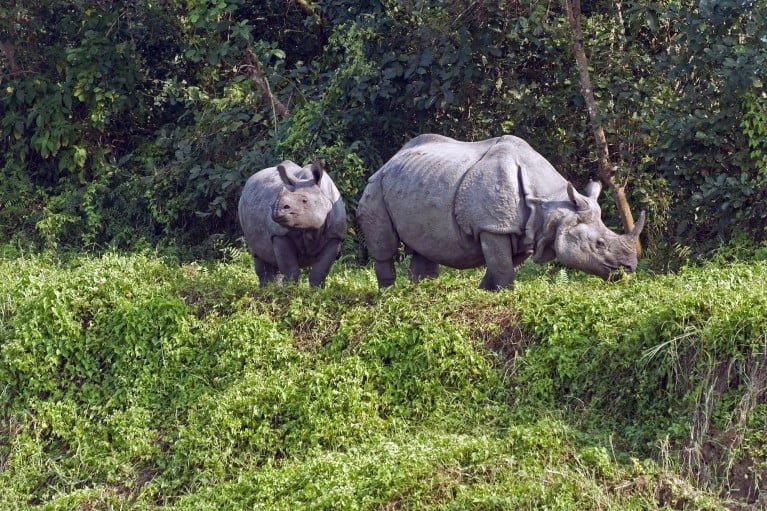
Area: 952.63 km2 (367.81 sq. mi)
Established Date: 1973 AD
Provinces: Bagmati, Madhesh, & Gandaki
Location: Central Terai (Chitwan, Makwanpur, Parsa, Nawalpur districts)
Distance (from Kathmandu): 171 km
Best time to visit: Spring (March-May), & Autumn (September-November) seasons
Flora Specialties:
• 50+ herpeto fauna species [Saccharum ravennae, Giant Cane, Khagra Reed etc.]
Fauna Specialties:
• 700+ species of wildlife [One-horned rhino, Royal Bengal Tiger, Leopard, Gharial, Elephant, Sloth bear, etc.]
• 543+ species of birds [Gould’s Sunbird, Bengal Florican, Brahminy Ducks, etc.]
Attractions:
• Elephant Breeding Center
• Gharial Breeding Center
• Tharu Village
• Bishazari Taal
Activities:
• Jungle Safari (Elephant safari/Jeep safari)
• Bird Watching
• Canoeing
• Elephant Bathing
• Excursion around Tharu Village
• Photography
Entry Fee:
• Foreigners- USD 20/person
• SAARC- USD 10/person
• Children Below 10 years- Free
• Additional charge for activities inside the park
Best Way to Get There:
• Fly to Chitwan from Kathmandu, take a vehicle ride to the national park
• Private or public vehicle from Kathmandu to Chitwan
Shuklaphanta National Park
This Shuklaphanta national park is an amalgam of vast grasslands, lush forests, riverbeds, and tropical wetlands. The Rani Tal (Queen Lake) in the vicinity is mesmerizing. This Shuklaphanta National Park is home to 36 tigers. It expands at an altitude from 174 m to 1386 m.
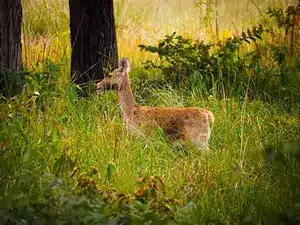
Area: 305 km2 (118 sq. mi)
Established Date: 1974 AD (as Wildlife Reserve); 2017 AD (changed into National Park)
Province: Sudurpashchim
Location: (Kanchanpur district)
Distance (from Kathmandu): 712 km
Best time to visit: Spring (March-May), & Autumn (September-November) seasons
Flora Specialties:
• 553 vascular plants, 18 pteridophytes, 410 dicots, & 125 monocots. Main grass species- Imperata Cylindrica & Heteropogon Contortus
Fauna Specialties:
• [Swamp deer, One-horned rhinos, Wild Elephants, Bears, Crocodiles, Hispid Hare]
• 268 species of birds [Bengal Florican]
Attractions:
• Extensive open grasslands of Shuklaphanta
• Wetlands like Rani Tal, Sikari Tal, Lalapani Tal, Tara Tal
Activities:
• Jungle walk to Shuklaphanta grasslands and witness a herd of swamp deer
• Boating in Rani Tal
• Explore the other wetlands
• Visit nearby Tharu villages
• Photography
Entry Fee:
• Foreigners- USD 15/person
• SAARC- USD 7/person
• Children Below 10 years- Free
• Additional charge for activities inside the park
Best Way to Get There:
• Fly to Dhangadhi from Kathmandu, and vehicle ride to the park via Mahendranagar
• Private or public vehicle from Kathmandu to Mahendranagar via Dhangadhi
Langtang National Park
The first Himalayan national park of Nepal lies in the Langtang Valley. This national park stands at the top in terms of biodiversity. Its half portion is covered with a buffer zone.
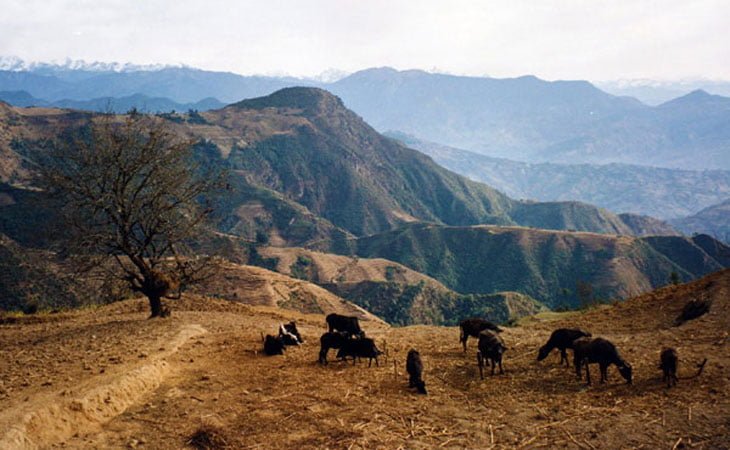
Area: 1,710 km2 (660 sq. mi)
Established Date: 1976 AD
Province: Bagmati
Location: (Rasuwa, Nuwakot, Sindhupalchwok districts)
Distance (from Kathmandu): 137 km
Best time to visit: Spring (March-May), & Autumn (September-November) seasons
Flora Specialties:
• 14 vegetation types in 18 ecosystem types [Himalayan Birch, Rhododendron, Juniper, Fir]
Fauna Specialties:
• [Red Panda, Snow Leopard, Musk Deer, Himalayan Thar, Wild Sheep, Langur]
• 250 Bird species [Impeyan Pheasant & other migratory birds during spring and autumn seasons]
Attractions:
• Sacred Gosaikunda Lake and small lakes in the vicinity
• Buddhist Monasteries
• Phenomenal views of Langtang Ranges
Activities:
• Hike to Gosaikunda
• Hike to Suryakunda
• Trekking (Langtang Valley, Tamang Heritage Trail, Helambu Trek)
• Photography
Entry Fee:
• Foreigners- USD 30/person
• SAARC- USD 15/person
• Children Below 10 years- Free
Best Way to Get There:
• Private or public vehicle to Syabrubesi from Kathmandu, trek onward
Sagarmatha National Park
The national park which is home to diverse flora and fauna also includes the world’s highest Mt. Everest. This park is situated at the highest altitude. In the vicinity of the park, the towering peaks such as Lhotse, Nuptse, Pumori, Cho-Oyu, Thamserku, Ama Dablam, etc. add beauty. The first national park that is listed as UNESCO World Heritage Site in 1979 AD. The elevation ranges from 2845 m to 8848.86 m.

Area: 1,148 km2 (443 sq. mi)
Established Date: 1976 AD
Province: Koshi
Location: (Solukhumbu district)
Distance (from Kathmandu): 25-minute Lukla flight, and trek onward
Best time to visit: Spring (March-May), & Autumn (September-November) seasons
Flora Specialties:
• 1000+ floral species [Himalayan Birch, Rhododendron, Juniper, Fir]
Fauna Specialties:
• [Musk Deer, Himalayan Bear, Snow Leopard, Himalayan Thar, Himalayan Serow]
• 208 bird species [Impeyan Pheasant, Bearded Vulture, Snowcock, Alpine Chough]
Attractions:
• World’s highest Mt. Everest including Pumori, Cho-Oyu, Nuptse, Lhotse
• Picturesque valleys
• Beautiful landscape
• Buddhist Monasteries
Activities:
• Trekking trails for Everest Base Camp, Gokyo Lake trek
• Photography
Entry Fee:
• Foreigners- USD 30/person
• SAARC- USD 15/person
• Children Below 10 years- Free
Best Way to Get There:
• Fly to Lukla from Kathmandu and trek onward
• Private or public vehicle from Kathmandu to Jiri, Salleri, or Phaplu and trek onward
Rara National Park
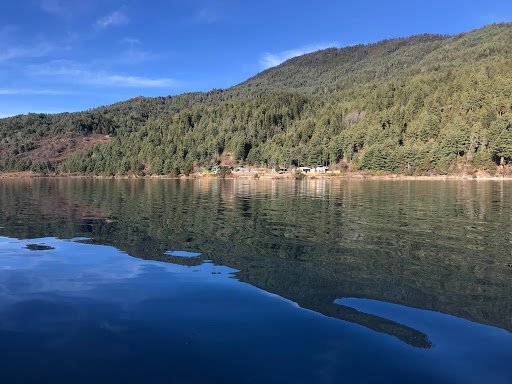
The smallest national park of Nepal which also has the largest freshwater Rara Lake. It is popularly known as Mahendra Lake. In 2007, it was declared a Ramsar site. Its elevation ranges from 2800 m to 4039 m.
Area: 106 km2 (41 sq. mi)
Established Date: 1976 AD
Province: Karnali
Location: (Mugu, Jumla districts)
Distance (from Kathmandu): 863.9 km
Best time to visit: Spring (March-May), & Autumn (September-November) seasons
Flora Specialties:
• 1074 species [Himalayan Cypress, West Himalayan Spruce, Black Juniper, Oak]
Fauna Specialties:
• 51 species of mammals [Himalayan Bear, Himalayan Thar, Ghoral, Wild Boar]
• 236 species of birds [Tufted Duck, Gadwall, Common coot, Mallard]
• 3 endemic fish species [Nepalese snow trout, Rara snow trout, Rara Lake frog]
Attractions:
• Largest freshwater Rara Lake
• Forested hills-Chuchemara Danda and Murma
• Stunning Mt. Saipal
• Migrated Siberian birds during the Summer season
Activities:
• Hike to Murma Danda
• Boating on Rara Lake
• Camping around the lake
• Photography
Entry Fee:
• Foreigners- USD 30/person
• SAARC- USD 15/person
• Children Below 10 years- Free
• Additional charge for activities inside the park
Best Way to Get There:
• Fly to Nepalgunj from Kathmandu, and from Nepalgunj fly to Mugu, take a jeep ride
• Private or public vehicle from Kathmandu to Mugu via Surkhet
Bardiya National Park
The largest national park in the lower Terai region is Bardiya National park. This park covers around 327 km2 of the buffer zone. It is home to 125 tigers. It plays a vital role in Tiger preservation. The park ranges from 152 m to 1441 m.
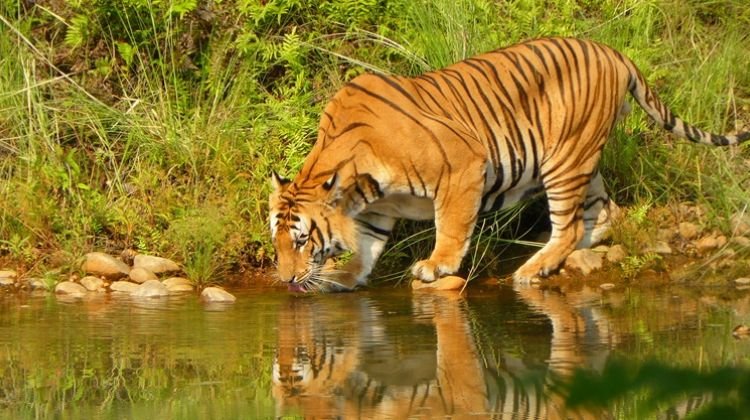
Area: 968 km2 (374 sq. mi)
Established Date: 1976 AD (established as Royal Karnali Hunting Reserve), 1984 AD (changed into National Park)
Province: Lumbini
Location: (Bardiya district)
Distance (from Kathmandu): 586 km
Best time to visit: Spring (March-May), & Autumn (September-November) seasons
Flora Specialties:
• 839 species of flora including 173 vascular plants
• 70% of the park covers the forest
Fauna Specialties:
• 642 species [Bengal Tiger, Leopard, Swamp deer, Otter, Blackbuck, Wild Elephant, One-horned rhinos, Crocodile]
• 407 species of birds [Bengal Florican, Sarus crane, Jungle Prinia, Bush Warbler]
• 53 mammals, 23 reptiles & amphibian species
• 125 species of fish [Gangetic dolphin, Fishing cat]
Attractions:
• Tharu Cultural Museum
• Crocodile Breeding Center
• Elephant Breeding Center
• Ancient temples
Activities:
• Jungle Safari [Jeep/Elephant safari]
• Butterfly Watching
• Bird Watching
• Fishing
• Visit breeding centers
Entry Fee:
• Foreigners- USD 20
• SAARC- USD 10
• Children Below 10 years- Free
• Additional charge for activities inside the park
Best Way to Get There:
• Fly to Nepalgunj from Kathmandu, take a vehicle ride to the park
• Private or public vehicle from Kathmandu to a national park via Nepalgunj
Shey-Phoksundo National Park
The biggest national park in Nepal. It is also the only trans-Himalayan national park in Nepal. In 2007, Shey-Phoksundo Lake inside the park was declared a Ramsar site which is also the deepest lake in Nepal. It expands from 2130 m to 6885 m.
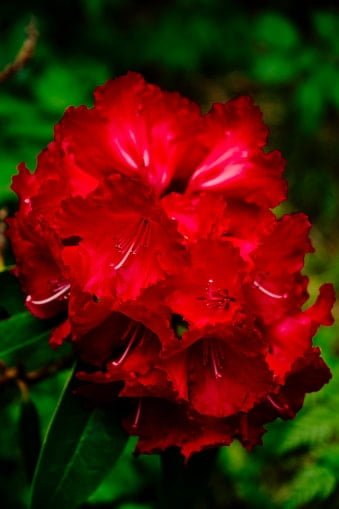
Area: 3,555 km2 (1,373 sq. mi)
Established Date: 1984 AD
Province: Karnali
Location: (Dolpa, Mugu districts)
Distance (from Kathmandu): 55-minute flight to Nepalgunj, 45-minute flight to Juphal from Nepalgunj
Best time to visit: Spring (March-May), & Autumn (September-November) seasons
Flora Specialties:
• 286 species of ethno botanicals [blue pine, hemlock, spruce, poplar, rhododendron]
Fauna Specialties:
• [Snow Leopard, Tibetan Rabbit, Golden Jackal, Blue Sheep, Musk Deer, Yak]
• 200 species of birds [Tibetan partridge, wood snipe, seven species of accentors, six species of golden eagle]
• 29 species of butterflies, & 6 reptiles
Attractions:
• Deepest lake of Nepal-Shey-Phoksundo
• One of the highest-flying butterflies in the world
• Suligad waterfall
• Buddhist monasteries near Ringmo and Pungmo villages
Activities:
• Visit Buddhist monastery
• Butterfly watching
• Short hiking
Entry Fee:
• Foreigners- USD 30/person
• SAARC- USD 15/person
• Children Below 10 years- Free
Best Way to Get There:
• Fly to Nepalgunj from Kathmandu, fly to Juphal from Nepalgunj, and trek onward
Parsa National Park
The former wildlife reserve Parsa national park is rich in diverse flora and fauna. The park has a phenomenal sub-tropical jungle. One can surely get an amazing natural experiences among the one of the 12 national parks in Nepal. At present, the park has 40 tigers. It covers a buffer zone of around 285.30 km2. This national park ranges in altitude from 435m to 950m.
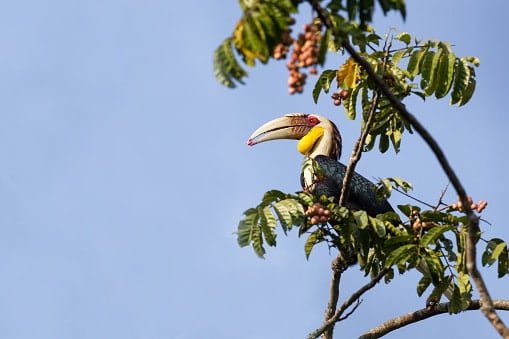
Area: 637 km2 (246 sq. mi)
Established Date: 1984 AD (as Wildlife Reserve); 2017 AD (changed into National Park)
Provinces: Madhesh, & Bagmati
Location: (Parsa, Bara, Makwanpur districts)
Distance (from Kathmandu): 110 km
Best time to visit: Spring (March-May), & Autumn (September-November) seasons
Flora Specialties:
• 919 species of flora [Sal, Sisau, Silk cotton trees]
Fauna Specialties:
• [Indian Bison, Bengal tigers, Wild Elephants, Hog deer, Sloth bear, Hyena]
• 300 species of birds [Giant Hornbill, Peafowl, Woodpeckers, Red Jungle Fowl]
• Reptiles [King Cobra, Krait, Rattle Snake, Python]
Attractions:
• Tharu culture and their lifestyles
• Mesmerizing sub-tropical jungle
Activities:
• Bird Watching
• Explore the nearby Tharu villages
Entry Fee:
• Foreigners- USD 15/person
• SAARC- USD 7/person
• Children Below 10 years- Free
• Additional charge for activities inside the park
Best Way to Get There:
• 20-minute Flight to Simara from Kathmandu, take a 15-minute vehicle ride to the national park
• Private or public vehicle to Parsa from Kathmandu via Mahendra Highway
Khaptad National Park
The Khaptad national park is popular as the only mid-mountain national park in western Nepal. It covers the buffer zone area of 216 km2. The ecosystem of this park is very unique. It is at an elevation of 1400 m to 3300 m.

Area: 225 km2 (87 sq. mi)
Established Date: 1986 AD
Province: Sudurpashchim
Location: (Bajhang, Bajura, Doti, Accham districts)
Distance (from Kathmandu): 450 km
Best time to visit: Spring (March-May), & Autumn (September-November) seasons
Flora Specialties:
• 567 species of flora
Fauna Specialties:
• [Musk Deer, Ghoral, Leopard, Danphe, Munal, Charibagh, Golden Jackal, Barking deer, White Rumed Vulture
Attractions:
• Temples- Badimalika, Shaileswori
• Khaptad Baba Ashram
• Surma Sarovar Lake, Ramaroshan Lake
• Mountains such as Saipal, Mt. Api
Activities:
• Hike around the different trails inside the national park
• Meditation
• Interact with the babas and learn about spirituality, meditation
Entry Fee:
• Foreigners- USD 15/person
• SAARC- USD 5/person
• Children Below 10 years- Free
• Additional charge for activities inside the park
Best Way to Get There:
• Fly to Chainpur (Bajhang) from Kathmandu, trek onward for two days
Makalu Barun National Park
This Makalu Barun national park lies at a high elevation and encloses the low tropical forests to snow-covered peaks. The glacial lakes, hot spring waters, riverbeds, and mountain peaks in their natural form add beauty to this park. It is at an elevation of 344 m to 8025 m.
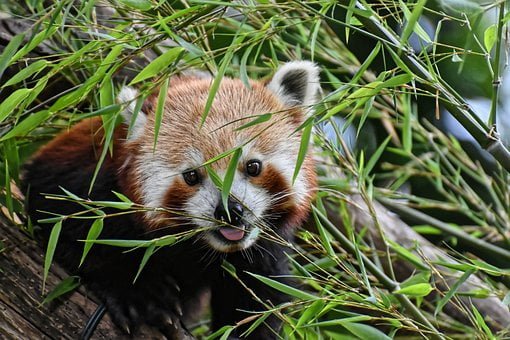
Area: 1,500 km2 (580 sq. mi)
Established Date: 1992 AD
Province: Koshi
Location: (Sankhuwasabha, Solukhumbu districts)
Distance (from Kathmandu): 39.8 km from Tumlingtar Airport [It takes approx. 35-minute to reach Tumlingtar via flight from Kathmandu]
Best time to visit: Spring (March-May), & Autumn (September-November) seasons
Flora Specialties:
• [Exotic vegetation, Medicinal Plants, 47 varieties of Orchids, Maple, Magnolia]
Fauna Specialties:
• [Himalayan Black Bear, Red Panda, Clouded Leopard, Wild Boar, Himalayan Marmot]
• 400 species of birds [Olive ground Warbler, Spotted wren Babbler]
• 84 varieties of fish in the Arun river
Attractions:
• Strict Nature Reserve [protection of natural ecosystems and processes in an untouched state for scientific study]
• 5th highest peak in the world-Mt. Makalu
• Snow-covered mountains such as Mt. Baruntse, Mera Peak
Activities:
• Bird watching
• Makalu Base Camp Trek
• Photography
Entry Fee:
• Foreigners- USD 30/person
• SAARC- USD 15/person
• Children Below 10 years- Free
• Additional charge for activities inside the park
Best Way to Get There:
• Fly to Tumlingtar from Kathmandu, vehicle ride for a few hours, & trek onward
Shivapuri Nagarjuna National Park
The nearest national park in Nepal from Kathmandu is Shivapuri Nagarjuna National Park. This national park is famous for short hiking inside the Kathmandu valley. This park is also home to historical and religious sites.
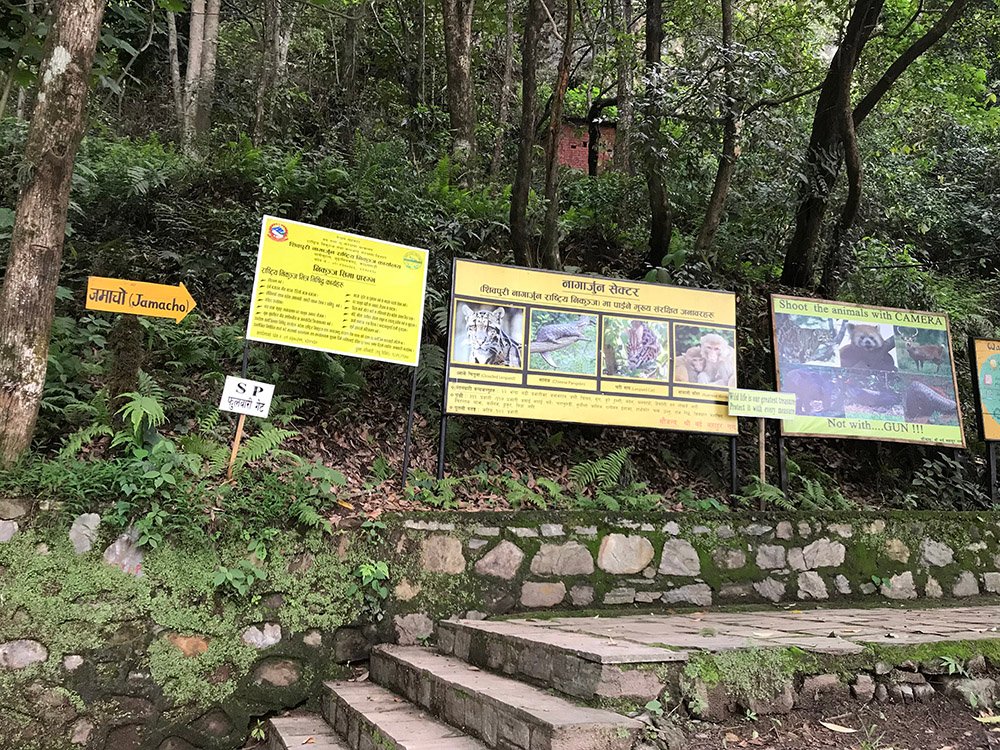
Area: 159 km2 (61 sq. mi)
Established Date: 2002 AD
Province: Bagmati
Location: (Kathmandu, Sindhupalchwok, Nuwakot, Dhading districts)
Distance (from Kathmandu): 32.6 km
Best time to visit: Spring (March-May), & Autumn (September-November) seasons
Flora Specialties:
• 2,122 floral species (449 vascular & 16 endemic plants), 129 species of mushrooms [Wild Himalayan cherry, chir pines, oak]
Fauna Specialties:
• [Assamese Monkey, Pangolin, Porcupine, Squirrel, leopard cat, masked palm civet, horned frog, slender snake]
• 318 species of birds [Eurasian eagle-owl, barred cuckoo-dove, golden-throated barbet, white-gorgeted flycatcher]
Attractions:
• Nagi Gumba (Monastery)
• Baghdwar
• Spectacular view of Kathmandu valley
• Snow-covered mountains such as Ganesh, Jugal, Langtang
Activities:
• Hiking
• Bird Watching
• Cycling
• Mountain bike ride
• Photography
Entry Fee:
• Foreigners- USD 10/person
• SAARC- USD 6/person
• Children Below 10 years- Free
• Additional charge for activities inside the park
Best Way to Get There:
• Private or public vehicle to Budhanilkantha from Kathmandu
Banke National Park
This Banke national park is termed as the ‘Gift to nature’. The national park is Nepal’s commitment to biodiversity protection. It covers 343 km2 as a buffer zone. As of now, there are 25 tigers. The park’s elevation ranges from 100 m to 2845 m.
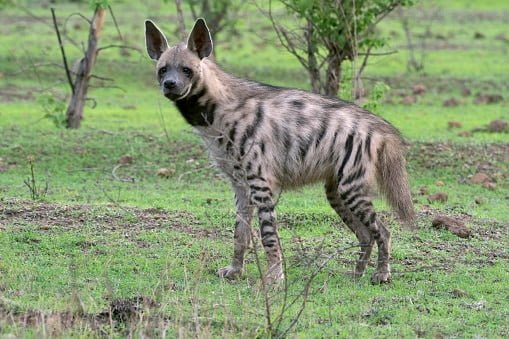
Area: 550 km2 (210 sq. mi)
Established Date: 2010 BS
Provinces: Lumbini & Karnali
Location: (Banke, Dang, Salyan districts)
Distance (from Kathmandu): 485 km
Best time to visit: Spring (March-May), & Autumn (September-November) seasons
Flora Specialties:
• 113 tree species, 107 herbal species, 85 shrubs & climber species [Sal, Maplewood, Khair]
Fauna Specialties:
• 34 mammal species [Tiger, Pangolin, four-horned antelope, ruddy mongoose, Striped hyena, Asian Elephant]
• 300 species of birds [Giant Hornbill, Black stork, Bengal Florican]
• 24 species of reptiles [Ghariyal Crocodile, Golden Monitor Lizard, Asiatic Rock Python]
• 58 species of fish, 7 species of amphibians
Attractions:
• Buffer zone
• Wide-range of biodiversity
• Bengal tigers
Activities:
• Jungle Safari
• Bird watching
• Hike around short hiking trails
• Boating
• Cycling around nearby villages
• Photography
Entry Fee:
• Foreigners- USD 20
• SAARC- USD 10
• Children Below 10 years- Free
• Additional charge for activities inside the park
Best Way to Get There:
• Fly to Nepalgunj from Kathmandu, an hour vehicle ride to Banke National Park
• Private or public vehicle from Kathmandu to Banke national park via Prithvi Highway
